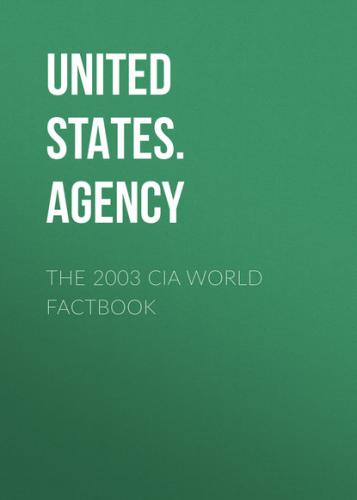elections: none; the monarch is hereditary; governor general
appointed by the monarch on the recommendation of the prime
minister; following legislative elections, the leader of the
majority party or leader of a majority coalition is sworn in as
prime minister by the governor general
note: government coalition - Liberal Party and National Party
Legislative branch:
bicameral Federal Parliament consists of the Senate (76 seats - 12
from each of the six states and two from each of the two mainland
territories; one-half of the members elected every three years by
popular vote to serve six-year terms) and the House of
Representatives (150 seats - this is up from 148 seats in 2001
election; members elected by popular vote on the basis of
preferential representation to serve three-year terms; no state can
have fewer than five representatives)
elections: Senate - last held 10 November 2001 (next to be held by
February 2005); House of Representatives - last held 10 November
2001 (next to be held by February 2005)
election results: Senate - percent of vote by party - NA%; seats by
party - Liberal Party-National Party coalition 35, Australian Labor
Party 28, Australian Democrats 8, Green Party 2, One Nation Party 1,
Country Labor Party 1, independent 1; House of Representatives -
percent of vote by party - NA%; seats by party - Liberal
Party-National Party coalition 82, Australian Labor Party 65,
independent and other 3
Judicial branch:
High Court (the chief justice and six other justices are appointed
by the governor general)
Political parties and leaders:
Australian Democrats [Andrew BARTLETT]; Australian Labor Party
[Mark LATHAM]; Australian Progressive Alliance [Meg LEES]; Country
Labor Party [leader NA]; Australian Greens [Bob BROWN]; Liberal
Party [John Winston HOWARD]; The Nationals [John ANDERSON]; One
Nation Party [Len HARRIS]
Political pressure groups and leaders:
Australian Monarchist League [leader NA]; Australian Republican
Movement [leader NA]
International organization participation:
ANZUS, APEC, ARF (dialogue partner), AsDB, ASEAN (dialogue
partner), Australia Group, BIS, C, CP, EBRD, ESCAP, FAO, IAEA, IBRD,
ICAO, ICC, ICCt, ICFTU, ICRM, IDA, IEA, IFAD, IFC, IFRCS, IHO, ILO,
IMF, IMO, Interpol, IOC, IOM, ISO, ITU, NAM (guest), NEA, NSG, OECD,
OPCW, PCA, Sparteca, SPC, SPF, UN, UNCTAD, UNESCO, UNHCR, UNMEE,
UNTSO, UNU, UPU, WCO, WFTU, WHO, WIPO, WMO, WTrO, ZC
Diplomatic representation in the US:
chief of mission: Ambassador Michael J. THAWLEY
consulate(s) general: Atlanta, Chicago, Honolulu, Los Angeles, New
York, and San Francisco
FAX: [1] (202) 797–3168
telephone: [1] (202) 797–3000
chancery: 1601 Massachusetts Avenue NW, Washington, DC 20036
Diplomatic representation from the US:
chief of mission: Ambassador J. Thomas SCHIEFFER
embassy: Moonah Place, Yarralumla, Canberra, Australian Capital
Territory 2600
mailing address: APO AP 96549
telephone: [61] (02) 6214–5600
FAX: [61] (02) 6214–5970
consulate(s) general: Melbourne, Perth, Sydney
Flag description:
blue with the flag of the UK in the upper hoist-side quadrant and a
large seven-pointed star in the lower hoist-side quadrant known as
the Commonwealth Star, representing the federation of the colonies
of Australia in 1901; the star depicts one point for each of the six
original states and one representing all of Australia's internal and
external territories; the remaining half is a representation of the
Southern Cross constellation in white with one small five-pointed
star and four larger, seven-pointed stars
Economy Australia
Economy - overview:
Australia has a prosperous Western-style capitalist economy, with a
per capita GDP on par with the four dominant West European
economies. Rising output in the domestic economy has been offsetting
the global slump, and business and consumer confidence remains
robust. Australia's emphasis on reforms is another key factor behind
the economy's strength. The stagnant economic conditions in major
export partners and the impact of the worst drought in 100 years
cast a shadow over prospects for 2003.
GDP:
purchasing power parity - $525.5 billion (2002 est.)
GDP - real growth rate:
3.6% (2002 est.)
GDP - per capita:
purchasing power parity - $26,900 (2002 est.)
GDP - composition by sector: agriculture: 3% industry: 26% services: 71% (2001 est.)
Population below poverty line:
NA%
Household income or consumption by percentage share:
lowest 10%: 2%
highest 10%: 25.4% (1994)
Distribution of family income - Gini index:
35.2 (1994)
Inflation rate (consumer prices):
2.8% (2002 est.)
Labor force:
9.2 million (37256)
Labor force - by occupation:
services 73%, industry 22%, agriculture 5% (1997 est.)
Unemployment rate:
6.3% (2002)
Budget:
revenues: $86.8 billion
expenditures: $84.1 billion, including capital expenditures of $NA
(FY 00/01 est.)
Industries:
mining, industrial and transportation equipment, food processing,
chemicals, steel
Industrial production growth rate:
4.3% (2002 est.)
Electricity - production:
198.2 billion kWh (2001)
Electricity
